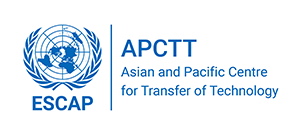Low Temperature Tech Carbonization
CARBON BLACK FROM SCRAP TIRE CRUMB/WASTE RUBBER BY ADVANCED LOW TEMPERATURE CARBONIZATION TECHNOLOGY. Swedish RTD & industrial engineering organization offers advanced carbon black recycling technology using low temperature carbonization - thermal adsorption process, e.g. indirect thermal treatment system. It is an advanced and integrated carbonization - dry distillation process, in educative environment in absence of air. The main component of the process is a specially designed, indirectly fired rotary reactor in which the pure tire crumb feed stock in a reductive environment is carbonized and perfectly gazed-out, in low vacuum, at the temperature of approx. 600º C into pyrolysis gas-vapor and char end product. Pyrolysis gas-vapor is directly combusted at high temperature and heat recovered. The pyrolysis-gas combustion chamber is support heated with oil and operates at min 1250º C. The support oil is used to raise the temperature to the correct level to avoid formation of dangerous compounds. The remaining gas is cleansed in a high capture efficient, indirectly cooled; wet gas scrubber and the impurities are collected from the scrubber process water prior to discharge. Char is indirectly cooled and discharged for the fine milling below 20 micron dimension. The total weight of all apparatus in a one-reactor complete plant is about 130 MT. Such a plant will require a main process building of minimum 700 sq.m. and fine milling and storage building of minimum 350 sq.m. If tire crumbs are not available but tires need to be ground, a tire grinding building of min. 400 sq.m. also be required for the purpose. Production equipment includes: -Steel constructions: reactors; boilers and steam generators 200 kg/h capacity; quality control (X-ray, ultrasonic and magnetic crack detection, chemical analysis and mechanical tests). Steel qualities: DIN 17100; DIN 17155; DIN 17440 in plate thickness 1-22 mm, pipes up to d=150 mm; -Combustion chamber lining SK 32; -Electric motors from 0.15 kW to 12 kW plus wiring; -Electronics, Honeywell Series 9000; field instrumentation for t, pressure, p difference and other field instrumentation. CONTACT DETAILS: Mr. Edward Someus - Thermal Desorption Technology Group Ltd. General Director - Environmental Scientist. Szechenyi u.59, H-1222 Budapest, Hungary. Tel. (36-20) 980 6996 - Fax: (36-1) 228 6045 Web: www.tdt-3r.com or Wineham, New Rd., Wormley, Godalming Surrey GU8 5SU United Kingdom. Phone: (44-1428) 683 505 Fax: (44-1428) 683 599 E-mail: edward@mail.inext.hu
Sector: Rubber
Country: India
Area of Application: Chemical industry, rubber industry: the fine milled carbon black end product is utilized as filling material in manufacturing of tire and other rubber products and in paint industry.
Keywords: rubber, carbonization, tire
Advantages: Safe, ecologically clean technology: the technology has been designed to meet new U.S. and European environmental norms and international market requirements after the year 2000. While low temperature vacuum pyrolysis is quite common in developed countries, innovative features of this technology are the horizontal rotary reactor and the ways and means to insert and take out raw material and end product, take out pyrolysis gas and the time material stays in the reactor and finally the means to transfer heat/energy to the rubber crumbs. The resulting machinery is environmentally superior, less energy consuming, of simpler mechanical construction and yielding a more constant and smoother quality then other applications of the pyrolysis process. Waste utilization: scrap automobile tire crumb between 0-3 mm dimensions is used as raw material. Economical performance: low investment, low O&M cost and high volume, high quality production. Complete solution: post processing of gas, water and solid end products stemming from its operation is not required. Intelligent, integrated and advanced technology: continuous (6,000 to 7,200 h/year), fully automated and monitored operation. Upgrading of capacity option for new and existing installations. Carbon black produced contains a matrix of inorganic chemicals allowing the tire manufacturers to use this carbon black as filler up to 35-50% compared to the usual 15-20% only.
Environmental aspects:
Development Status: Pilot Plant
Legal Protection: Patent
Technical specifications:
Transfer Terms: Technology Licensing , Equipment Supply
Target Countries: World Wide
Estimated cost (US$):
Upload any relevant document:
Contact Person: APCTT (UNESCAP)
Address: Asian and Pacific Centre for Transfer of Technology (APCTT) C-2, Qutab Institutional Area
City: New Delhi
Country: India
Zip/Pin Code: 110016

